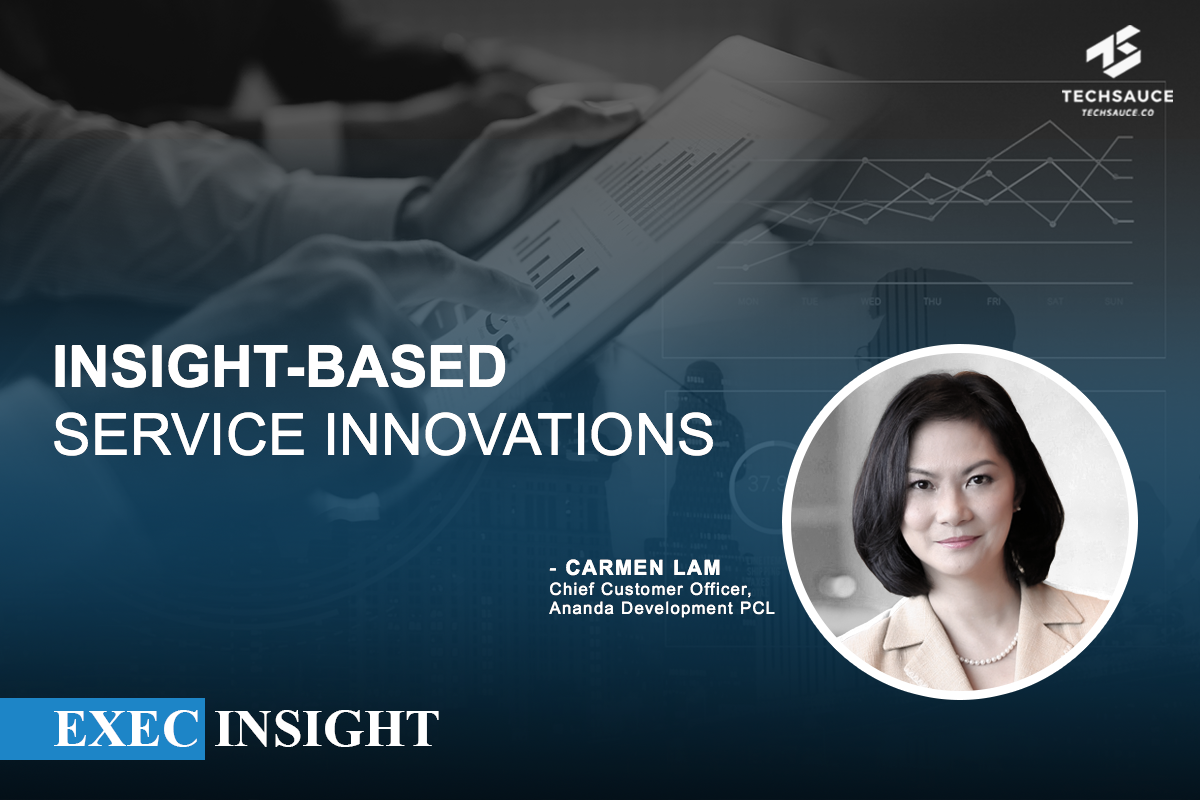Insight-based Service Innovations
By Carmen lam Chief Customer Officer, Ananda Development
Service innovation in the digital era can take many forms. At the most basic level, it could result in a transformation of processes to make a company’s existing service offerings more responsive and timely for the target customer; on another level, it could mean novel service offerings made possible by new insight into existing customer needs and wants; and for others, it can provide a platform to bring about wholesale transformation of organizations with new business models that cater to new customers and new needs.

Superior insight based on data
A common thread linking these use cases is the enhanced capability through digital tools and processes to harness the power of data to produce insight that create better service solutions and higher customer satisfaction. Microsoft said in their 2018 State of Customer Service Report that 59% of customers have higher expectations for customer service today compared to one year ago while 95% said that customer service is important to their choice of and loyalty to a brand. In the current omni-channel world, customers expect seamless and quality experiences through any channel, medium and device of their choice, anytime and anywhere, from their preferred brands. Service providers need to respond by better utilization of data to gain insight on their customers to improve customer communication and servicing. To achieve that, it is critical to apply the right technological solution but even more importantly, the solution design and implementation must be done based on the type of information or analytical outcome that is desired.
Making sense of customer data – personas, segments and need-states
Many organizations today still face data lakes and are unable to utilize them properly due to legacy systems and integration issues. However, even for organizations that have integrated data solutions, users may sometimes be confused by what is the right approach to synthesize and utilize data. A simple example is understanding when to use segments vs. personas vs. need-states.
Segments, personas and need-states can all be derived from processing and analyzing customer demographic, psychographic, geographic, behavioral, usage and experience data. This can be done with simple reporting and visualization tools but can also be supplemented by more sophisticated research and analytical tools such as regression and choice techniques. However, the three representations of customer data provide totally different views and insight for users and should not be confused.
Simply put, a market segment is a sub-group of a bigger group of customers that share common characteristics such as geographic location, buying channel or purchasing power. For example, baby boomers or American visitors to Thailand are market segments. Segments are usually created to help a business do marketing or customer management more efficiently.
A persona is a fictitious character to represent different types of users of a service or product to help an organization better understand customer objectives, experiences and behaviors. For example, a product development executive can create the persona of a working mother in a big city by describing typical motivations, aspirations, habits and daily routines of people in such a role. The descriptions are usually the result of summarizing and generalizing information from existing databases or market research of real people.
A need-state focuses on the context and motivational drivers under which a service or a product is purchased or used and is good for zeroing in on specific usage occasions. Examples of need-states for a foodservice operator could be people ”who don’t feel like cooking” or those “who are celebrating a special occasion”.
As such, market segments are high level broad categories of customers and are commonly used to optimize marketing, advertising and pricing efforts. Personas help organizations understand their customers’ purchase or usage objectives, pain points and desires, and support customer journey mapping to remove friction, to develop more holistic product offerings and to design more seamless purchase paths. Need-states focus on purchase drivers for each specific purchase occasion. This means that a single consumer can have multiple need-states and need to be communicated with and handled in different ways based on the need-solution context.
If segments are formulated to improve marketing effectiveness, and personas are created to make customer journeys seamless, then need-states are identified to ensure service and product offerings that are relevant to the customer at that moment in time.
As technology becomes more ubiquitous and customer expectations continue to grow, delivering the same consistent experience through every customer contact is no longer enough. Organizations need to look beyond demographics and psychographics, and be able to consolidate and interpret much more, including usage and experience records and other relevant data points, to generate useful insight that can predict and support each service encounter or need-state in order to achieve personalization and contextualization.
Start with the end in mind
The technology is important, but it is more than the technology. To support service innovations, more needs to be done with customer data to ensure the right insight for the right job. Customers do not care about the technology or the processes; they care about how they are treated, and how they are valued as individuals. Service innovation in the digital era requires users to have the end in mind in order to design and manage the right technological solutions that can help them create more personalization and relevance for the customer.
Professor Scott Galloway, the founder of L2, said in a recent blog that success in the services industries is a function of relationship development. Indeed, customer relationship development is more than smiling and being nice to customers. It’s about knowing customers’ likes and dislikes, their needs and wants, the buying occasion and purchase drivers in order to win in the battle for their hearts, minds and wallets.
ลงทะเบียนเข้าสู่ระบบ เพื่ออ่านบทความฟรีไม่จำกัด






